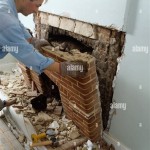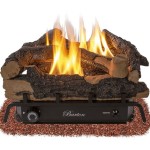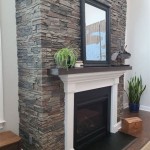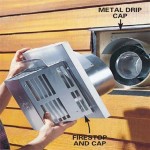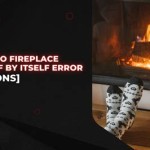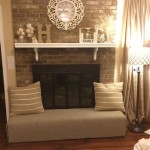Cast Iron Fireplace Reflector: Enhancing Heating Efficiency and Aesthetics
The cast iron fireplace reflector is a functional and decorative accessory designed to maximize the heat output of an open-hearth fireplace. In the context of traditional fireplaces, much of the heat generated radiates outwards, while a significant portion is lost up the chimney. The reflector aims to mitigate this loss by directing heat back into the room, thereby improving heating efficiency and creating a warmer, more comfortable environment.
These reflectors are typically constructed from cast iron, a material chosen for its excellent thermal properties and durability. Cast iron's ability to absorb and radiate heat efficiently makes it an ideal choice for this application. Furthermore, the robust nature of cast iron enables the reflectors to withstand the high temperatures and demanding conditions associated with fireplace use. Beyond their functional purpose, cast iron fireplace reflectors often feature intricate designs and finishes, contributing to the aesthetic appeal of the fireplace and surrounding living space.
Principles of Heat Reflection and Radiation
The functionality of a cast iron fireplace reflector relies on fundamental principles of heat transfer. Heat, in the context of a fireplace, is primarily transferred through two mechanisms: radiation and convection. Radiant heat travels in straight lines from the heat source (the fire) and warms objects directly in its path. Convective heat involves the warming of air, which then circulates throughout the room.
Without a reflector, a considerable amount of radiant heat escapes directly up the chimney. The reflector, strategically positioned behind the fire, intercepts this escaping radiant heat. Due to the reflective properties of the cast iron surface, especially when polished, a significant portion of this intercepted heat is redirected back into the room. This redirection increases the overall radiant heat output directed toward the occupants and objects within the space.
Furthermore, the cast iron itself absorbs heat from the fire. As the cast iron heats up, it becomes a secondary radiator, emitting its own radiant heat into the room. This process contributes to a more even and sustained heat distribution compared to relying solely on the direct radiation from the fire. The reflector acts as a thermal mass, storing and releasing heat gradually.
Design Variations and Placement Strategies
Cast iron fireplace reflectors are available in a variety of shapes, sizes, and designs to complement different fireplace styles and heating needs. Early examples often served as firebacks, simple flat plates positioned behind the fire. Over time, more sophisticated designs emerged, including curved reflectors, angled plates, and multi-panel arrangements.
The curvature of a reflector plays a crucial role in directing heat. A concave shape, for instance, focuses the reflected heat into a more concentrated area, while a flat reflector provides a wider, more diffuse reflection. The optimal shape depends on the size of the fireplace, the desired heating pattern, and the aesthetic preference of the owner.
Placement is also a critical factor in optimizing the performance of a fireplace reflector. The reflector should be positioned to maximize its interception of radiant heat that would otherwise be lost up the chimney. The proximity of the reflector to the fire needs careful consideration. If placed too close, the reflector may become excessively hot, potentially leading to damage or warping. If positioned too far away, its effectiveness in reflecting heat is reduced.
Furthermore, the angle of the reflector influences the direction of the reflected heat. Adjusting the angle can help to direct heat towards specific areas of the room, such as seating areas or high-traffic zones. Some reflectors feature adjustable mechanisms that allow for fine-tuning of the angle to achieve the desired heating effect.
Materials, Construction, and Maintenance
The primary material used in the construction of fireplace reflectors is, as the name suggests, cast iron. Cast iron is an alloy of iron, carbon, and silicon, known for its high thermal conductivity, durability, and ability to be molded into complex shapes. The casting process involves pouring molten iron into a mold, allowing it to solidify, and then removing the finished piece. This process allows for the creation of intricate designs and detailed patterns on the reflector surface.
The surface finish of the cast iron reflector can vary depending on the desired aesthetic. Some reflectors are left with a natural cast iron finish, which develops a patina over time with exposure to heat and smoke. Others are polished to a high shine, enhancing their reflective properties and creating a more visually appealing appearance. Still others feature decorative coatings, such as enamel, which can add color and protect the surface from corrosion.
Maintaining a cast iron fireplace reflector is essential to preserve its functionality and appearance. Regular cleaning is necessary to remove soot and ash buildup, which can reduce its reflective properties and detract from its aesthetic appeal. A soft brush and a mild cleaning solution are typically sufficient for cleaning. Abrasive cleaners should be avoided, as they can scratch or damage the finish. Applying a thin coat of stove polish periodically can help to protect the cast iron from rust and maintain its shine.
Over time, cast iron reflectors may develop cracks or other damage due to the high temperatures and thermal stress they endure. Minor cracks can often be repaired with specialized cast iron welding techniques. However, significant damage may require replacement of the reflector. Regular inspection of the reflector for signs of damage can help to prevent more serious problems and extend its lifespan.
The weight of a cast iron fireback or reflector should also be considered. Given the material's density, even relatively small reflectors can be quite heavy. This weight necessitates careful handling during installation and removal. It is also important to ensure that the fireplace hearth or structure can adequately support the weight of the reflector.
Benefits of Using a Cast Iron Fireplace Reflector
Employing a cast iron fireplace reflector offers several distinct advantages. The primary benefit is improved heating efficiency. By redirecting radiant heat back into the room, the reflector reduces heat loss up the chimney and increases the overall warmth of the space. This can lead to significant energy savings, as less wood or fuel is required to maintain a comfortable temperature.
Another benefit is enhanced aesthetic appeal. Cast iron reflectors often feature intricate designs and decorative finishes that can complement the style of the fireplace and surrounding living space. They add a touch of elegance and sophistication to the fireplace hearth, transforming it into a focal point of the room. The reflective surface of a polished reflector can also enhance the ambiance of the room by reflecting light and creating a warm, inviting atmosphere.
Furthermore, a cast iron fireplace reflector can help to protect the back wall of the fireplace from excessive heat. Repeated exposure to high temperatures can cause the back wall to crack or deteriorate over time. The reflector acts as a barrier, absorbing some of the heat and reducing the thermal stress on the back wall, extending its lifespan.
Finally, the use of a cast iron fireplace reflector contributes to a more even distribution of heat within the room. By radiating heat from a larger surface area, the reflector helps to eliminate cold spots and create a more consistent temperature gradient. This results in a more comfortable and enjoyable living environment.

English Late Victorian Fireplace Reflector 1900s For At Pamono

Antique Decorative Fire Back English Fireplace Hearth Backrest Victorian In Backs

3 Tall Heavy Antique Fire Back English Iron Fireplace Reflector Victorian For At 1stdibs

English Late Victorian Fireplace Reflector 1900s For At Pamono

Antique Large Cast Iron Fire Back Grate Heat Reflector Plate Circa 1900 At 1stdibs Fireplace Shield Reflectors

Firebacks 500 Charles Nijman Fireplace Antiques

1900s Victorian Heavy Antique Decorative Fire Back English Fireplace Reflector Chairish

Cast Iron Fireplace Back 321 For On 1stdibs Antique Plate Backplate Panel
Need Help Getting More Heat From Stove Into Room House Hearth Com Forums Home

Fireplace Reflectors Improve Wood Burning Heat Efficiency
Related Posts

